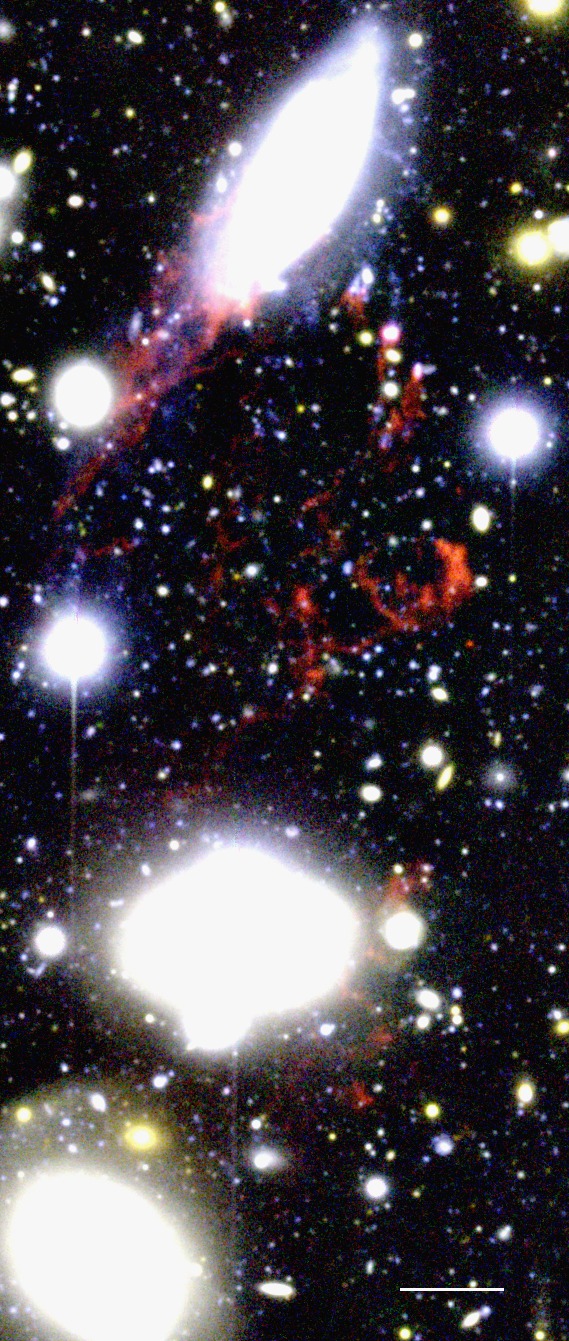Gas Ejected from Galaxies
Astrophotography・

In galaxy cluster regions where many galaxies are gathered together, gas which was ejected from galaxies long ago collects together through gravity and heats up, filling the surrounding space as hot plasma with temperatures of tens of millions of degrees. When a galaxy which fell into the cluster more recently passes through this hot plasma, the gas inside the galaxy is swept away by the plasma and flows out from the side away from the galaxy’s direction of motion. The tail-like appearance of this kind of gas, which has been stripped out from inside of a galaxy, is captured here. In this image, hydrogen gas is depicted in red. Through observations using the Subaru Telescope’s prime focus camera with a special filter to transmit the light from hydrogen gas (Hα line), we discovered that in places the expelled hydrogen gas extends to distances exceeding 300,000 light-years as it swirls.
Text by: Masafumi Yagi (Division of Optical and Infrared Astronomy)
Translation by: Ramsey Lundock (NAOJ)
Image Data
| Object | IC 4040 (in the constellation Coma Berenices) | Telescope | The Subaru Telescope | Instrument | Suprime-Cam | Date | Each band was imaged in May 2007 and May 2009 | Filters | 3 color composite: B (0.45 μm: Blue), R (0.65 μm: Green), Hα (0.67 μm: Red) | Exposure | 87.5 minutes (B band), 190 minutes (R band), 450 minutes (Hα band) |
|---|